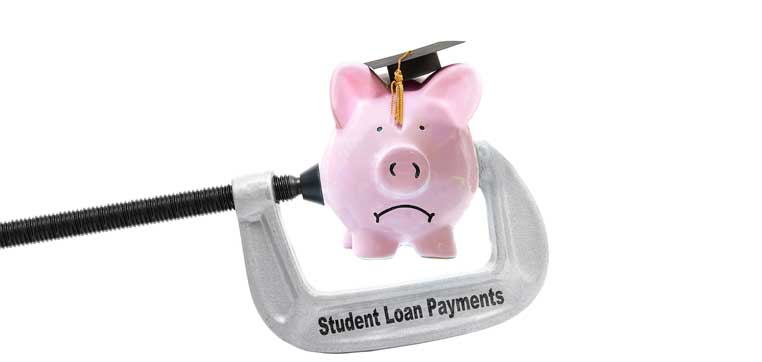 Many high school students are attracted to the idea of attending college in an urban environment. Never mind that most probably don’t participate in the activities unique to such environments once they move in, the desire is there. Although sometimes I suspect it’s more of an “I don’t want to go to school in the sticks because I can’t find a good bar” but let’s not be cynical.
Many high school students are attracted to the idea of attending college in an urban environment. Never mind that most probably don’t participate in the activities unique to such environments once they move in, the desire is there. Although sometimes I suspect it’s more of an “I don’t want to go to school in the sticks because I can’t find a good bar” but let’s not be cynical.
50-50 College Highlights
50-50 Highlights: Colleges with the Best Graduation Rates
 People are generally a little surprised when I recommend using 50% as the minimum graduation rate for looking for colleges. It does seem like a pretty low standard but the fact is that only approximately a quarter of colleges and universities have a four-year graduation rate of 49% or higher. If you use the five-year rate for public institutions, than then number increases to about a third of all schools.
People are generally a little surprised when I recommend using 50% as the minimum graduation rate for looking for colleges. It does seem like a pretty low standard but the fact is that only approximately a quarter of colleges and universities have a four-year graduation rate of 49% or higher. If you use the five-year rate for public institutions, than then number increases to about a third of all schools.
50-50 Highlights: Colleges that Spend the Most on Teaching Students
 This week we’re looking at which colleges spend the most on teaching students. Specifically, we’re going to look at the average instructional expenses per student. In some ways, you can consider it a monetary form of the student-faculty ratio. Theoretically, the more money spent on teaching the student, the better for the student.
This week we’re looking at which colleges spend the most on teaching students. Specifically, we’re going to look at the average instructional expenses per student. In some ways, you can consider it a monetary form of the student-faculty ratio. Theoretically, the more money spent on teaching the student, the better for the student.
50-50 Highlights: Colleges with Decreases in Average Net Price
 Anyone who spends time on this blog should realize that very few people pay the actual published price for college. This makes it difficult to judge the significance of the rising prices of college tuition. A lot of schools, especially public institutions, justify increasing tuition by pointing out that a certain percentage of the increase will go to financial aid.
Anyone who spends time on this blog should realize that very few people pay the actual published price for college. This makes it difficult to judge the significance of the rising prices of college tuition. A lot of schools, especially public institutions, justify increasing tuition by pointing out that a certain percentage of the increase will go to financial aid.
50-50 Highlights: NCAA D1 Colleges
 Is it possible to have college without athletics? The rest of the world pretty much thinks so. But we’re in the United States where college sports is a big business and can be a major selling point for universities. Students are interested in watching big time sports and the shared identity. For players it’s the next step, often the only or final step, in their athletic careers. For better or worse, sports play a major role in college education.
Is it possible to have college without athletics? The rest of the world pretty much thinks so. But we’re in the United States where college sports is a big business and can be a major selling point for universities. Students are interested in watching big time sports and the shared identity. For players it’s the next step, often the only or final step, in their athletic careers. For better or worse, sports play a major role in college education.
50-50 Highlights: Colleges with the Lowest Student Loan Default Rates
 Given that paying for a college education now rivals buying a house, it isn’t surprising the New York Fed reports that “Balances of student loans have eclipsed both auto loans and credit cards, making student loan debt the largest form of consumer debt outside of mortgages.” Faced with limited financial aid and the prospect of the equivalent of a mortgage payment upon graduating from college, families can’t help but ask if “college is worth it?”
Given that paying for a college education now rivals buying a house, it isn’t surprising the New York Fed reports that “Balances of student loans have eclipsed both auto loans and credit cards, making student loan debt the largest form of consumer debt outside of mortgages.” Faced with limited financial aid and the prospect of the equivalent of a mortgage payment upon graduating from college, families can’t help but ask if “college is worth it?”
50-50 Highlights: A+ Colleges for B Students
 If you want to see everything available in the spreadsheet that I use to create the 50-50 list, check out the sample spreadsheet.
If you want to see everything available in the spreadsheet that I use to create the 50-50 list, check out the sample spreadsheet.
When we hear college rankings, we tend to think of a listing of the “best” colleges, especially since US News College Rankings helps us along with its rankings every fall. Yet, even US News recognizes that not everyone can get into the “best” colleges and these less qualified students are just as deserving of a quality education. So it has created its A+ Schools for B Students list.
50-50 Highlights: Accessible, Quality Colleges for Merit Aid Opportunities
 As I work with college data, I learn about different variables and add them to my data sets. I also occasionally create a variable to more accurately capture a concept or value that I think is important when trying to figure out how much college will cost. This is why you’ll see multiple posts on some variation of a list of colleges with the best financial aid. And because of the variation, you’ll always find some colleges on one list and not another. Well, I’m adding another list of colleges to consider for merit aid.
As I work with college data, I learn about different variables and add them to my data sets. I also occasionally create a variable to more accurately capture a concept or value that I think is important when trying to figure out how much college will cost. This is why you’ll see multiple posts on some variation of a list of colleges with the best financial aid. And because of the variation, you’ll always find some colleges on one list and not another. Well, I’m adding another list of colleges to consider for merit aid.
50-50 Highlights: Colleges with the Most Health Professions Majors
 According to the Bureau of Labor Statistics, the occupation that is projected to have the second largest number of new jobs between 2014 and 2024 requires only a bachelor’s degree and had a 2015 median pay of $67,490 per year. It’s not engineering or computer programing. It’s nursing.
According to the Bureau of Labor Statistics, the occupation that is projected to have the second largest number of new jobs between 2014 and 2024 requires only a bachelor’s degree and had a 2015 median pay of $67,490 per year. It’s not engineering or computer programing. It’s nursing.








